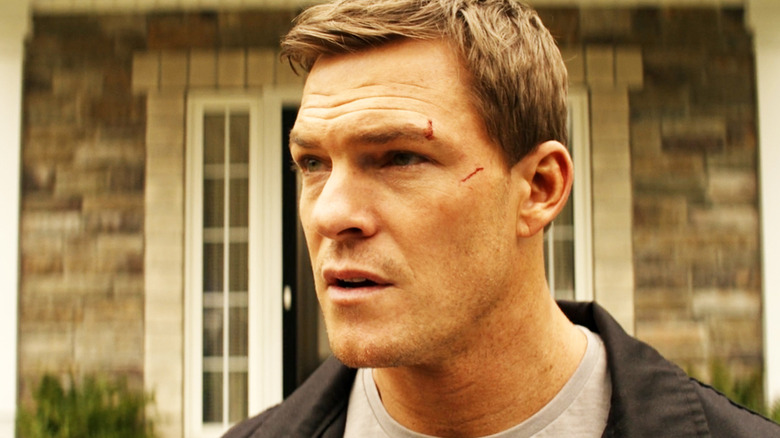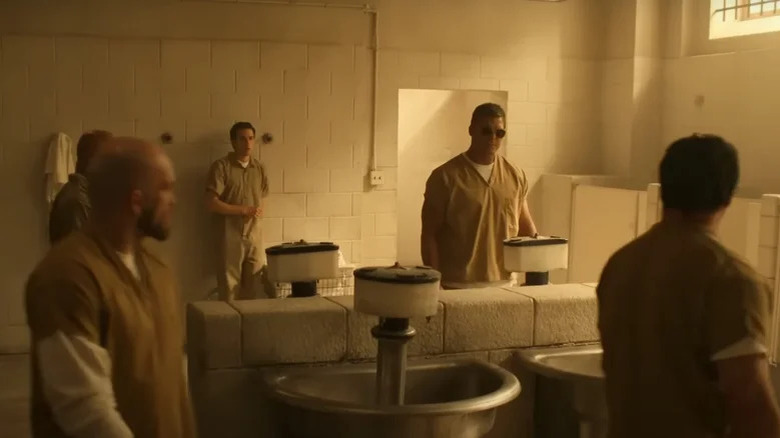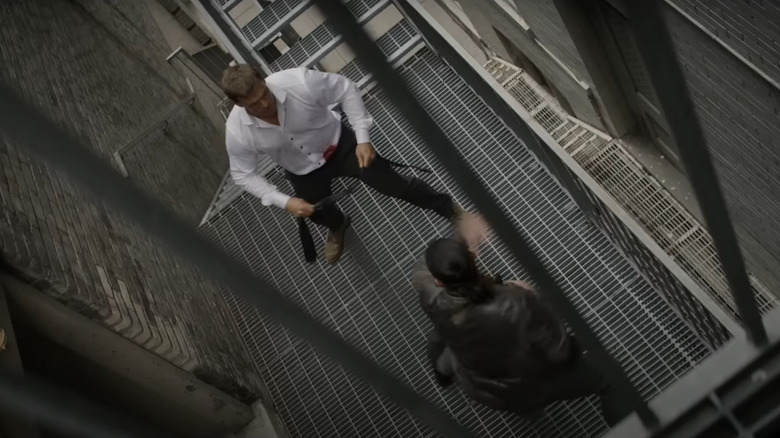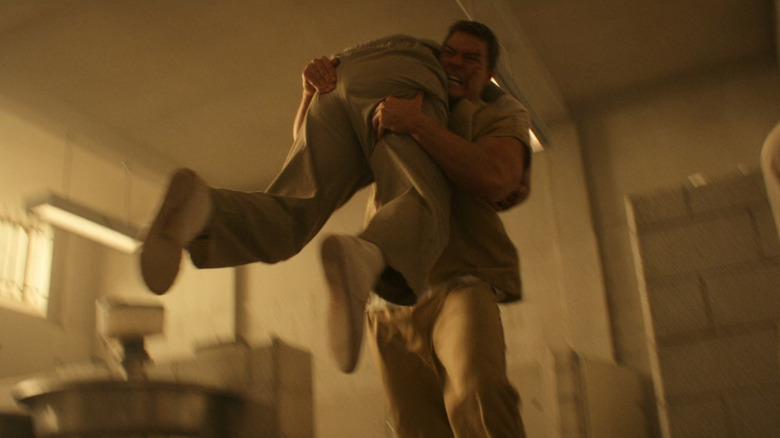How The Reacher Team Designed Alan Ritchson's Unique Fighting Style [Exclusive]
The first season of Prime Video's "Reacher" was basically an extended excuse to see Jack Reacher generally kicking ass. And there's nothing wrong with that. If there's one thing the character, originally created by author Lee Child, is known for, it's his massive frame and god-tier fighting skills. As the former military policeman says in the first Jack Reacher book, "Killing Floor":
"A military policeman deals with military lawbreakers. Those lawbreakers are service guys. Highly trained in weapons, sabotage, unarmed combat. Rangers, Green Berets, marines. Not just killers. Trained killers. Extremely well trained, at huge public expense. So the military policeman is trained even better. Better with weapons. Better unarmed."
And with "Reacher," showrunner Nick Santora was keen to bring that elite soldier to life as faithfully as possible, bringing fans a book-accurate Jack Reacher that you genuinely believe could take on five guys in a prison fight and walk away unscathed. Those fight scenes are all-important when it comes to selling star Alan Ritchson as the highly trained former military policeman of the novels. Which meant the production team and Ritchson had to put in a lot of work to make them the best they could be.
Designing the fight scenes in Reacher
The actual process of designing a fight scene is actually quite in-depth. Rather than coming up with choreography, rehearsing it, then shooting it, there's a whole methodology that involves adapting the action from the novels, then testing it as much as possible before shooting.
As showrunner Nick Santora explained in his /Film interview, the writers start with guidance from Child, who serves as an executive producer on the show, before the writer's room pens their version while striving to "keep most of everything, if not everything that's on the page." The reins are then passed to the stunt team and coordinators, who, as Santora said, "Put their own spin on it." Then, it's time for rehearsals, with the showrunner saying the following:
"We then get rehearsals with Alan on film. We watch those rehearsals — they're called pre-visualization of these fights. We watch them, producers watch them, studio watches them, the streamer watches them. And then we also have Lee watch them. And we just all discuss it. And we have little notes and thoughts, and we'll do another pass."
Once the pre-viz has been reviewed by everyone that needs to see it and a final version is locked, that gets taken to the set and the final fight is put together. But as Alan Ritchson recalled in his /Film interview, as the season went on, there was less and less time for this kind of in-depth fight prep:
"As we were in production, my availability just shrank, and I had less and less time for each fight. By the time we got to the end of the season, I was just learning fights in a parking lot, wherever we were shooting at the time, trying to get it ready for the next day."
Reacher's unique style
For Alan Ritchson, who worked hard to make his Jack Reacher familiar to fans of the books, running out of time to prep must have been stressful, especially considering that the actor had, by his own admission, never performed the kind of fighting style used in "Reacher." Ritchson is no stranger to action, having featured as Hank Hall/Hawk in HBO's "Titans" and as Aquaman/Arthur Curry in "Smallville." But as he revealed in a behind-the-scenes featurette for "Reacher," his latest starring role required him to learn a whole new combat style that involved attacking with his elbows and the back of his head. The actor, who's returning for "Reacher" season 2, was so concerned about the, "specific and different" fight style required that he says he was, "having a panic attack" about not being able to pull it off. Ritchson added:
"I was like 'I can never fight like that like.' I've been doing fights and stunts my whole career and I've done a lot of the martial arts. [Jack Reacher] moves in such a way that elbows and knees become a tool that we're just not used to seeing — elbows used like knives."
In the prison fight scene from the first episode, you can see all the elements both Santora and Ritchson talk about. The writers clearly preserved much of the beats from the scene in the "Killing Floor" book. Reacher uses his signature headbutt to kick things off, and to quote the book, jams his thumb into his assailant's eye and, "Hooked the tips of [his] fingers in his ear and squeezed." Elsewhere elbows are indeed "used like knives," and Reacher's unique style conveys an incongruous mix of pure brute strength and lazer-sharp precision.
Ritchson and the stunt team deserve the credit
Pre-visualising fight scenes is a commonly used technique in action movies, especially when directors and stunt coordinators know they have limited time to shoot the actual scene. Having a pre-viz as opposed to just a storyboard also allows for the camera operator to practice their movements, which, especially in recent years with the influence of things like the "John Wick" movies and their gun-fu style, have become as much a part of the choreography as the stunt performers and actors.
All of which should, in theory, make the final performance easier to shoot. In the case of "Reacher" and the brutal prison fight scene, Ritchson and the stunt coordinators had weeks to prepare and could eventually run the whole fight from start to finish in one go. That obviously changed as the shooting went on and Ritchson had less and less time to prepare. But ultimately he'd put in enough work prior to filming that once he was able to run the prison fight so easily and get the fighting style "in the body," as he said, the rest of the combat scenes were likely a lot easier to pick up. Which is why, in his /Film interview, Nick Santora stated:
"All the credit goes to the stunt team, the choreographers and Alan. Alan's the one who has to actually do this crazy stuff. And he takes it very seriously and you can see it comes out great, because he puts the work in. Alan Ritchson is the least lazy person I've ever met in my life."



